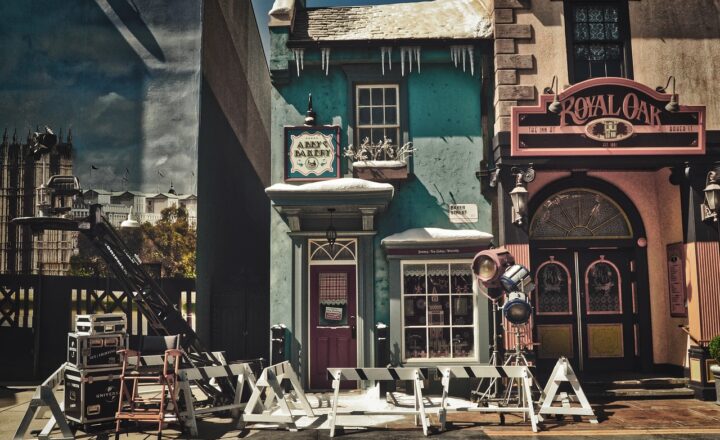Behind the Scenes: The Untold Stories of Classic Movies That Defined Generations
November 18, 2024

Classic movies have a unique place in our hearts, often shaping our cultural landscape and providing escape and inspiration across generations. Behind each cinematic masterpiece lies a wealth of untold stories, from struggles and triumphs of filmmakers to the fascinating details about the cast and crew. In this article, we will explore the behind-the-scenes moments from several iconic films, delving into the challenges, innovations, and surprising anecdotes that contributed to their legendary status.
1. The Making of “The Wizard of Oz” (1939)
Widely regarded as one of the greatest films of all time, “The Wizard of Oz” is not only known for its dazzling Technicolor and unforgettable music, but also for the behind-the-scenes drama that unfolded during its production.
Did you know that when filming began, Judy Garland, who played Dorothy, was only 16 years old? In order to achieve a more youthful look, the studio made her wear a corset to flatten her chest, which sadly contributed to her long-term health issues. Furthermore, the production faced several challenges including the departure of its first director, Richard Thorpe, who was replaced by George Cukor and later Victor Fleming.
Another famous anecdote involves the Tin Man character. Originally cast with a different actor who suffered a severe allergic reaction to the makeup, Jack Haley stepped in, but only after some major adjustments to the makeup formula were made, ensuring he wouldn’t face the same fate.
The meticulous detail that went into the production—from the Yellow Brick Road to the Emerald City—created a magical experience that transcended the era, forever impacting film and pop culture.
2. The Groundbreaking Techniques in “Star Wars” (1977)
George Lucas’s “Star Wars” revolutionized the film industry, not just for its epic storytelling but also for the innovative special effects that it introduced. The film required cutting-edge technology that didn’t exist at the time, leading the special effects team, ILM (Industrial Light & Magic), to create new techniques from scratch.
For instance, the famous lightsaber effect was created by filming actors swinging a metal rod and then layering the effect in post-production. Additionally, the sound of the iconic TIE Fighters was achieved by mixing the sound of a car driving on wet pavement with a jet engine.
The film faced its fair share of hurdles, too. Just weeks before the premiere, the final cut of the film was still being worked on, and the team endured a grueling schedule to finish on time. The nerves were apparent when they gathered for the New York premiere—the outcome was nothing short of spectacular, leading to a cultural phenomenon that persists to this day.
3. How “Casablanca” (1942) Survived Production Challenges
When you think of timeless romance, “Casablanca” comes to mind. But its production was marred by numerous challenges, including a constantly shifting script. Writers Julius J. Epstein, Philip G. Epstein, and Howard Koch faced the daunting task of crafting a screenplay that would resonate emotionally while meeting studio deadlines.
Because of the written direction, much of the dialogue was golden, resulting in the film’s most famous lines, such as “Here’s looking at you, kid.” In fact, many of the actors were not privy to the entire script, which contributed to the film’s heartfelt authenticity as the actors had to deliver spontaneous performances.
The eventual success of “Casablanca” owes much to its unexpected twists, including romantic tension between characters played by Humphrey Bogart and Ingrid Bergman. Ultimately the film not only survived studio pressures but emerged as a beloved classic that shaped the romance genre for generations to come.
4. The Cultural Impact of “Psycho” (1960) and Its Shocking Scenes
Alfred Hitchcock’s “Psycho” is often credited with altering the landscape of horror films. The famous shower scene has been dissected by critics and filmmakers alike for its groundbreaking editing and use of sound. Little did the audience know that it took a week to film just a few minutes of that iconic sequence.
In fact, Hitchcock himself was highly involved with every element of the production, often terrifying the crew and even Janet Leigh, who played Marion Crane. The film not only pushed the boundaries of violence in cinema but also broke social taboos of its time, leading to an overwhelming wave of controversy and acclaim.
Perhaps one of the most shocking secrets of this production was the memorable score composed by Bernard Herrmann. Utilizing just strings, Herrmann crafted a haunting sound that matched the chilling aesthetic of the film, famously known as the “screaming violins.” This innovative sound design became synonymous with the horror genre itself. Many consider “Psycho” a pioneer film that changed how stories were told, laying the groundwork for generations of filmmakers that followed.
5. The Legacy of “Jaws” (1975) and Its Unfortunate Shark
When you think about summer blockbusters, “Jaws” is at the forefront, but behind the scenes was a challenging and tumultuous shoot. Steven Spielberg’s fear of the ocean influenced his artistic decisions; however, technological constraints meant that the mechanical shark, named Bruce, often malfunctioned. In fact, Bruce failed repeatedly during principal photography, leading Spielberg to shift the storytelling approach.
Instead of showcasing the shark, he relied on suspense and the unseen, marking a departure from typical monster movies of the era. This decision ultimately proved to be a masterstroke that kept audiences on the edge of their seats.
Despite the challenges, “Jaws” went on to break box-office records and became the first true summer blockbuster, paving the way for high-concept films in the coming decades. The tensions and struggles experienced during production made the success of “Jaws” all the more fascinating and impactful in cinematic history.
Conclusion: The Enduring Legacy of Classic Films
Each classic film we celebrate today carries with it stories of hardship, creativity, and groundbreaking ideas that reflect not only the era in which they were made but the values of the time. These behind-the-scenes tales emphasize the resilience and passion of those who made these films possible, solidifying their legacy for generations to come.
As we continue to admire the artistry expressed in classic cinema, let us remember the untold stories that shaped our favorite films and their impact on the culture we share. Behind every classic movie lies a profound narrative waiting to be discovered—one that invites us to appreciate the simplicity and complexity of the stories we hold dear.







